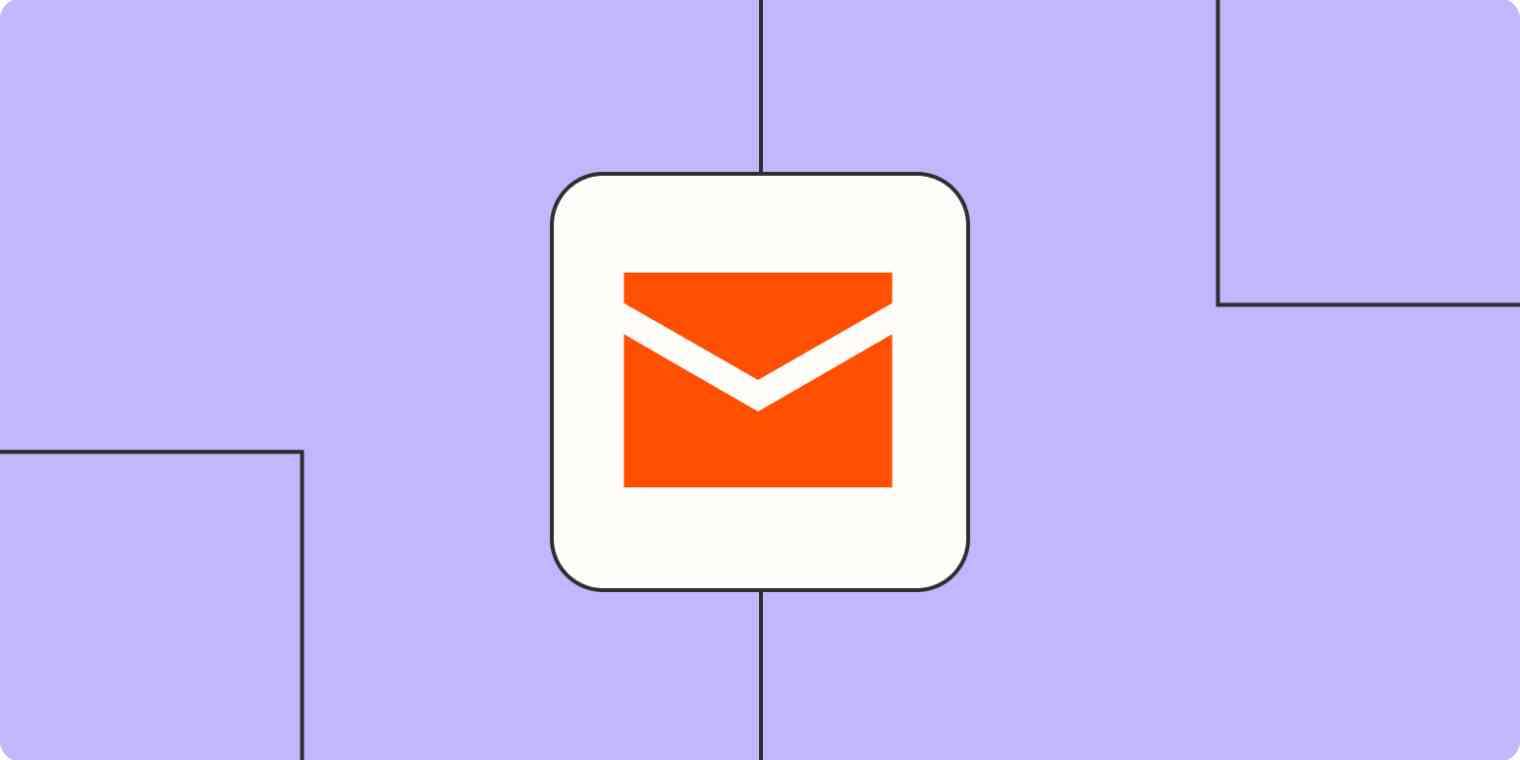What's the email address for your business? If it ends with @gmail.com, @outlook.com, or (please no) @yahoo.com, you need to change it.
That's just how it is.
Many small businesses start as a side hustle, so it's understandable if you set up a free email address and just started using that. But that's a temporary solution. Free email addresses can make your company look amateurish, and using them makes it harder for you to take control of communication—and accounts for other services—later on.
What's the alternative? Setting up email addresses using your company's domain name. If your company's website is TotallyRealCompany.com, your email addresses should end with that, like this: realperson@totallyrealcompany.com. Let's talk more about why this is a good idea, then look at the best resources for the job.
Once you have your business email set up, it's time to start automating it. Here's how to tame your inbox with automation.
It helps your brand
Remember those convenience store signs that featured a giant Coca Cola logo, then had the actual name of the store in small letters? Stores got those signs for free—they were called privilege signs. The trade-off was simple: Coke got to advertise, and the store got a free sign. These aren't common anymore, and it's no wonder: modern small businesses are savvy enough to know how valuable branding is. It doesn't make sense to put someone else's brand on your storefront.
You should think of free email addresses the same way. Using a Gmail account for your business is the equivalent of having a giant Google logo on all of your correspondences.
Anyone on earth can make a free Gmail account, which means someone emailing you from a Gmail account could be literally anyone. An email from your domain, meanwhile, can only come from you. Plus, it can help people find your website—the name is right there in your email address.
It sounds like a small thing, but small things matter when it comes to branding. Don't advertise someone else in your email address—make it about your business.
It gives you control
But this goes beyond branding. Emails on your domain are also practical.
Small businesses will often start with a single free email address, but that inevitably becomes unmanageable as the business grows. Your employees will need their own addresses, and if you don't provide one, they're going to use their personal accounts. That means their communication with customers is happening on addresses you don't control. It also means that, if an employee leaves, those conversations leave with them. At best, this is annoying for your customer: your former employee will have to explain the situation and put you in touch. At worst, it means a former employee can take their customers with them.
Email addresses on your domain, meanwhile, are in your control. If an employee leaves, you can redirect emails from their old address, so that you get the messages. That's a big deal.
It also means you can take control of any software they signed up for with that email address. I spend a couple of hours every week responding to Zapier customer questions, and I've seen so many employers ask for access to an account tied to a Gmail address, which they say belongs to a former employee. It's an unfortunate situation, and one that could be avoided if the business had set up email addresses on their domain.
How to get email addresses on your domain
To set up email accounts using your company's web address as the domain, start with our list of the best email hosting for small businesses. And keep in mind that you won't necessarily have to give up the user interface you're used to. Google Workspace (formerly G Suite) offers Gmail for businesses, meaning you can keep using Google's email interface while using an address on your company's domain. Microsoft 365 lets you do the same thing using Outlook. All of these services are reasonably priced, and well worth the branding and security benefits.
Free is a very good price, but free email might be costing you. Consider upgrading.





